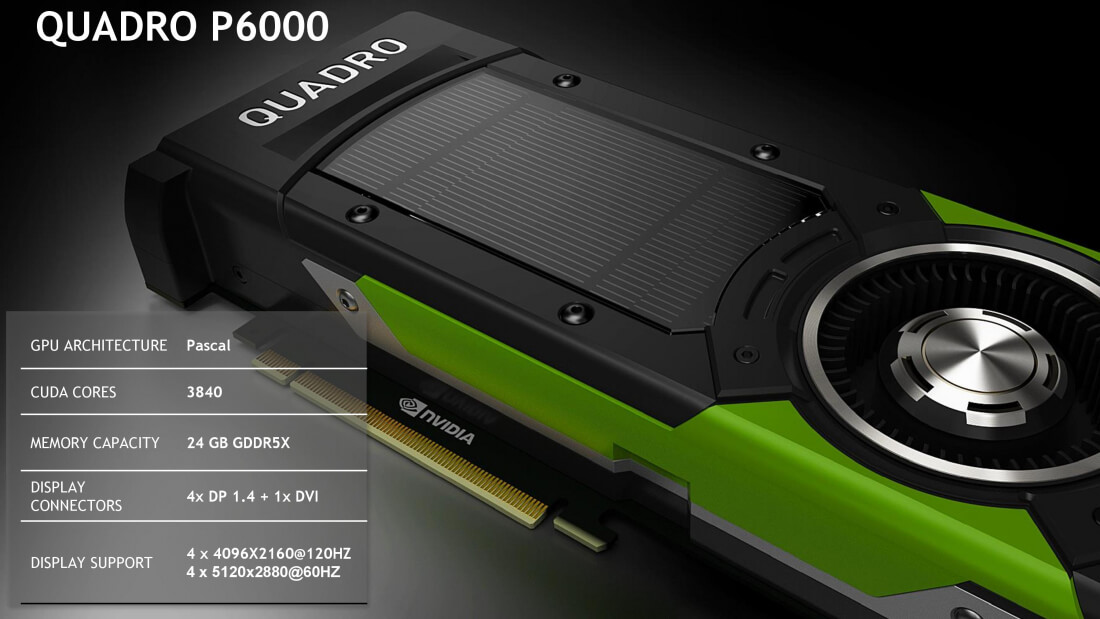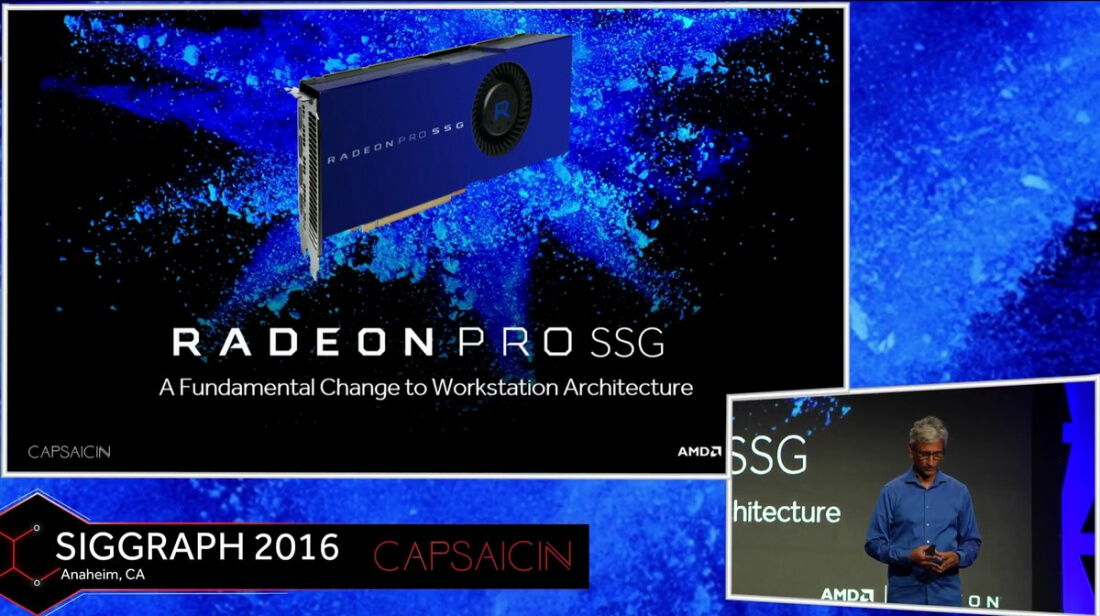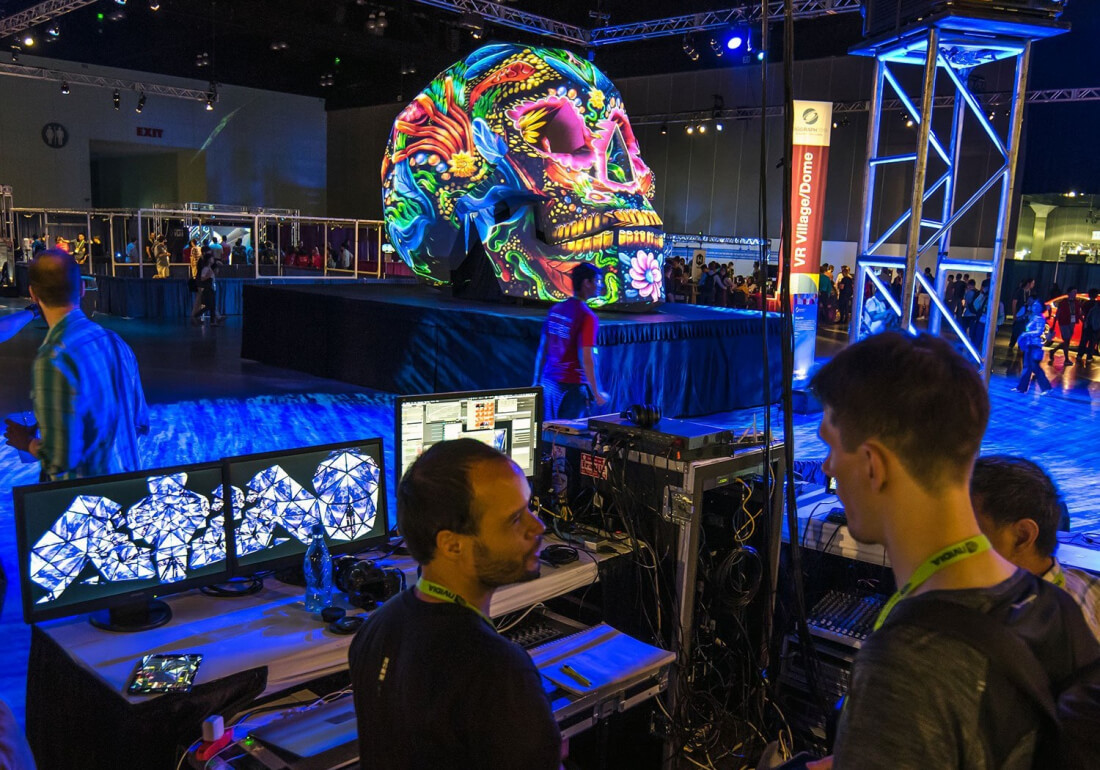The SIGGRAPH trade show is the holy grail of computer graphics and, increasingly, mobile graphics, virtual reality and augmented reality. It's here where GPU vendors introduce some of their latest creations, software companies debut new offerings, and where you'll see some of the coolest looking tech demos you've ever come across.
This year's show---appropriately held across the street from Disneyland in Anaheim, CA---lived up to those expectations, with numerous announcements from multiple vendors. While they all featured their own unique perspective, they shared a similar theme of enabling the creation of entirely new worlds, much like Walt did his own day.
Nvidia kicked things off by introducing what they claim to be the world's fastest GPU, the Quadro P6000, less than a week after they introduced their Titan X GPU, which held a very brief reign at the top of the performance heap. The critical difference, of course, is that that the Quadro P6000 is a high-end professional graphics card designed for workstations, versus the consumer-oriented and gaming focused Titan X. Both are based on Nvidia's new Pascal architecture, but the P6000 ups the ante to 12 teraflops of single-precision performance (vs. 11 teraflops for the Titan X) with more graphics cores and a larger and faster bank of onboard memory.

Not to be outdone, the newly rejuvenated AMD debuted its new line of lower-cost Radeon Pro WX workstation-focused cards, which are available for under $1,000, and which take over from the previous FirePro line. In addition, AMD used their first major SIGGRAPH press event in years to highlight a new technology called SSG (Solid State Graphics), which enables the company to deliver a terabyte of memory onboard prototype graphics cards via an embedded SSD (flash-based solid-state hard drive). Apparently the cards---commercial versions are expected in 2017---leverage a PCIe peer-to-peer connection to the drive to give them extremely speedy performance.

In the mobile arena, Qualcomm took advantage of SIGGRAPH to provide some additional details about their work with Google on Tango-enabled smartphones, such as the previously announced Lenovo Phab 2 Pro. Ironically, a key element of the Qualcomm Snapdragon design used for the Tango-enabled device is that it doesn't use the GPU at all for its augmented reality efforts. Instead, a combination of the DSP, sensor hub, and image processing elements of the chip---in conjunction with a sophisticated global clocking elements that keeps disparate elements in sync---enables some promising new augmented reality applications, including the potential for new types of GPS-independent indoor mapping.
On the software side, both Nvidia and AMD discussed new developments that can enable real-time viewing and streaming of high-quality (up to 4K) 360° video streams. This extremely computation-intensive task stitches together the video feeds of multiple cameras into a single video signal which can be viewed on VR headsets, either locally or remotely via the cloud. Importantly, both efforts help make the possibility of delivering non-gaming VR applications much more likely in the near future.
Both Nvidia and AMD talked about additional efforts to build tools to more quickly enable the creation of new virtual worlds.
Both companies also talked about additional efforts to build tools to more quickly enable the creation of new virtual worlds. Nvidia discussed their iRay software, which enables near real-time ray tracing of 3D modelled worlds, while AMD highlighted their new ProRender (previously called FireRender), which is noteworthy because AMD chose to make it completely open source.
In both cases, the companies stuck to the theme of delivering faster, easier and more efficient ways of creating virtual and augmented worlds. If either VR or AR headsets and related products are ever to reach mainstream, they're going to be very dependent on a robust and varied set of hardware and software tools that can help in the creation of some compelling new worlds. Based on this year's SIGGRAPH announcements, it looks like we're moving in the right direction.
Bob O'Donnell is the founder and chief analyst of TECHnalysis Research, LLC a technology consulting and market research firm. You can follow him on Twitter @bobodtech. This article was originally published on Tech.pinions.
